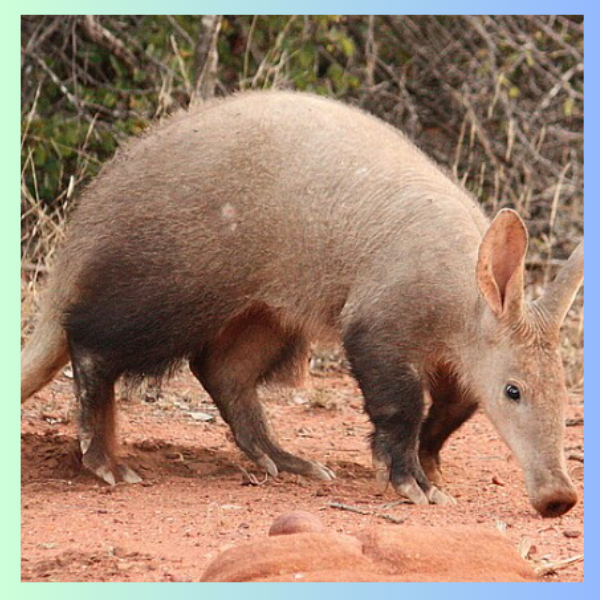Aardvark: Unveiling the Enigmatic Creature. In the vast tapestry of the animal kingdom, the aardvark stands as an intriguing and enigmatic creature. This article delves into the world of the aardvark, shedding light on its unique features, behaviors, habitat, and significance within the ecosystem. From its peculiar appearance to its essential role, let’s embark on a journey of discovery.
Aardvark: Unveiling the Enigmatic Creature
The Aardvark: A Mystical Beast
Unraveling the Appearance
With a seemingly otherworldly appearance, the aardvark boasts a blend of distinctive features. Its elongated snout, resembling a fusion of a shovel and a tube, sets it apart. This remarkable tool serves a dual purpose – it aids in foraging for food and plays a pivotal role in excavating burrows, showcasing nature’s unparalleled craftsmanship.
A Night Dweller’s Lifestyle
Under the cover of the night, the aardvark emerges from its subterranean abode, engaging in a nocturnal lifestyle. This solitary creature embarks on a quest for sustenance, using its keen sense of smell to locate its favorite prey – termites. As it ventures forth, its large, rabbit-like ears swivel, capturing the faintest sounds of scuttling insects.
The Aardvark’s Realm: Habitat and Distribution
Beneath the African Sky
Native to the expansive landscapes of Africa, the aardvark has adapted to diverse habitats, ranging from savannas to rainforests. Its subterranean tendencies are facilitated by its powerful claws, which effortlessly transform the earth into intricate tunnel systems. These burrows provide not only refuge from predators but also a safe haven for raising young aardvarks.
The Mosaic of Distribution
Spanning a wide array of African countries, the aardvark’s distribution is a mosaic that paints a fascinating picture. From South Africa to Sudan, these elusive creatures leave their mark on the soils of the continent. This distribution showcases their resilience and ability to adapt to varying environmental conditions.
Aardvark’s Role in the Ecosystem
Guardians of Termite Control
While the aardvark’s appearance might evoke curiosity, its role within the ecosystem is no less intriguing. As voracious consumers of termites, they act as natural pest controllers. By keeping termite populations in check, aardvarks contribute to the delicate balance of their habitats, preventing potential damage caused by unchecked termite colonies.
Ecosystem Engineers
Beyond their insectivorous appetite, It’s play an unexpected role as ecosystem engineers. Their burrowing behavior not only influences the physical landscape but also provides shelter for other creatures, including reptiles and small mammals. This interdependence highlights the ripple effect of a single species on an entire ecosystem.
Conservation Concerns and Future Prospects
Navigating the Challenges
Despite their unique attributes, It’s face challenges that threaten their survival. Habitat loss due to human activities, as well as encounters with vehicles, pose significant threats. These factors emphasize the importance of conservation efforts to ensure the persistence of this cryptic species.
Charting the Path Ahead
To secure the future of aardvarks, a multi-faceted approach is required. Conservationists are focusing on habitat preservation, raising public awareness, and conducting research to better understand these creatures. By unraveling the mysteries of aardvarks, we can pave the way for their coexistence with humans and the preservation of their natural habitats.
Conclusion
In the tapestry of life, the aardvark stands as a testament to the diverse and intricate threads that weave the ecosystem together. With its peculiar appearance, nocturnal habits, and vital ecological role, this enigmatic creature invites us to contemplate the hidden wonders of the natural world. As we strive to safeguard its existence, let us remember that within the shadowy recesses of the night, the aardvark plays a crucial part in maintaining the delicate balance of life.
FAQs
Are aardvarks endangered?
Aardvarks are currently listed as a species of “Least Concern” by the IUCN, but localized threats have raised concerns about their future.
Do aardvarks have any natural predators?
Adult aardvarks are relatively free from predators, but young ones may fall victim to larger carnivores like lions and hyenas.
Can aardvarks survive in captivity?
While challenging due to their specialized diet and habitat needs, aardvarks can survive in captivity under proper care.
What is the lifespan of an aardvark?
In the wild, aardvarks typically live around 10 to 15 years, while those in captivity may live longer.
How do aardvarks reproduce?
Aardvarks reproduce by giving birth to a single offspring after a gestation period of about 7 months. The young aardvark matures slowly and remains with its mother for an extended period.



